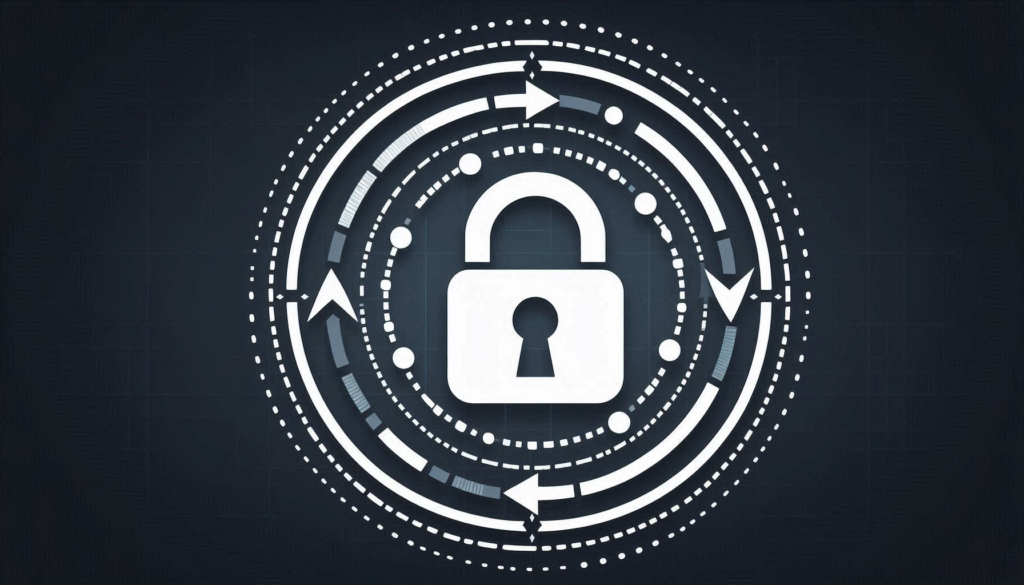Introduction to Zero Trust Security Model
The Zero Trust Security Model enhances cybersecurity by requiring continuous verification of every user and device. This approach eliminates implicit trust within networks, significantly reducing the risk of unauthorized access.
Core Principles of Zero Trust
The Zero Trust Security Model is built on foundational principles that strengthen defenses against cyber threats.
Continuous Authentication
Unlike traditional models, Zero Trust insists on continuous verification. It requires checking identity, device health, and contextual factors every time a user or device requests access. This ensures only authorized users with secure, up-to-date configurations can access sensitive data.
Least Privilege Access
Zero Trust enforces the principle of least privilege. Users receive only the minimum access necessary to perform their tasks. This limitation reduces the potential damage from compromised accounts or devices.
Microsegmentation
Zero Trust divides the network into smaller, isolated segments. This prevents attackers from moving laterally within the network. If one segment is breached, attackers cannot easily access other parts, containing the potential damage.
Proactive Threat Management
Zero Trust assumes threats can come from anywhere. It requires proactive threat detection and management. Organizations must implement advanced monitoring tools that detect anomalies and provide real-time analytics. Quick response to potential breaches minimizes operational impact.
Contextual Access Controls
Zero Trust bases access decisions on multiple factors, including user identity, device type, location, and behavior patterns. This context-aware approach ensures access is granted only under secure conditions, reducing the likelihood of unauthorized entry.
Why Adopt Zero Trust?
As cyber threats evolve, the Zero Trust Security Model offers a robust framework for protecting digital assets.
Securing Remote Workforces
Remote work has expanded the attack surface for many organizations. The Zero Trust model addresses these challenges by requiring continuous verification of every access request. This approach is vital for securing remote environments, where employees might access company resources from insecure networks.
Adapting to Cloud Environments
The adoption of cloud services introduces new vulnerabilities. Zero Trust mitigates these risks by enforcing strict access controls. Only verified users can interact with cloud-based resources. This reduces the risk associated with the expanded attack surface.
Ensuring Regulatory Compliance
Industries like healthcare, finance, and government face strict regulatory requirements. Zero Trust helps organizations comply by implementing comprehensive security measures. These measures protect sensitive data and maintain detailed audit trails, essential for demonstrating regulatory compliance.
Mitigating Insider Threats
Insider threats, whether intentional or accidental, pose significant risks. Zero Trust reduces these risks by monitoring user behavior and restricting access to essential resources. If anomalies are detected, the system can revoke access or require additional verification, mitigating the impact of insider threats.
Steps to Implementing Zero Trust
Implementing Zero Trust requires careful planning and commitment to continuous improvement. Follow these steps for effective implementation.
Assess Current Security Posture
Start by evaluating your existing security measures. Identify vulnerabilities where Zero Trust principles can be applied. This assessment will help you prioritize areas for improvement and create a roadmap for implementation.
Develop and Enforce Access Policies
Next, develop access policies based on the principle of least privilege. These policies should be dynamic, considering factors like user roles, device health, and network location. Regularly review and update these policies to adapt to changing security needs.
Implement Multi-Factor Authentication (MFA)
MFA is crucial to the Zero Trust model. It requires multiple forms of verification before granting access, reducing the risk of unauthorized access. MFA should be implemented across all access points, including remote access and cloud services.
Adopt Advanced Monitoring Tools
Continuous monitoring is essential in a Zero Trust environment. Invest in tools that provide real-time analytics and detect anomalies. These tools should integrate with your existing security infrastructure and offer actionable insights for quick threat response.
Regularly Update Security Measures
Cyber threats evolve rapidly. Regularly review and update your security practices to stay ahead of emerging threats. Apply the latest patches, updates, and refine your access policies. Keeping your security measures current ensures continued protection.
Educate Employees on Zero Trust
Ensure all employees understand the Zero Trust model and best practices for maintaining security. Regular training sessions can help employees stay informed about the latest threats and how to avoid them. A culture of security awareness reduces the likelihood of human error leading to a breach.
Conclusion: The Future of Cybersecurity with Zero Trust
The Zero Trust Security Model is a significant advancement in cybersecurity. By focusing on continuous verification, least privilege access, and proactive threat management, organizations can effectively protect sensitive information and maintain business continuity. As cyber threats continue to evolve, adopting Zero Trust is not just recommended—it’s essential. Implementing this model will provide robust protection against sophisticated cyber threats, safeguarding your organization’s most valuable assets.





pro natural bodybuilding
References:
Steroids To Gain Weight And Muscle (https://Is.Gd/JhOeVN)
sustanon dianabol cycle
References:
dianabol only cycle reddit – https://oren-expo.ru/user/profile/287788 –
how to take dianabol first cycle
References:
dianabol cycle Before And after (Tellmy.ru)
best time of day to take hgh
References:
Hgh Injections Side Effects (https://Researchglaze.Com/Employer/Wachstumshormon-Hgh-And-Peptide-Kaufen-Sie-Legale-Hgh-In-Deutschland)
as part of the omnibus crime control act of 1990
References:
winstrol weight gain, git.barneo-tech.Com,
Natural products with great results, no harsh chemical smells afterward. Eco-friendly is the future. Thanks for caring.
cjc1295 ipamorelin benefits
References:
cjc-1295/ipamorelin Blend Orlando
cjc 1295 ipamorelin testosterone
References:
ipamorelin dac (https://hedgedoc.eclair.ec-lyon.fr/nZaOqNPHQ3WqTkom4R9vHQ/)
mod grf ipamorelin ghrp-2 blend
References:
ipamorelin 2mg Axiom peptides for sale
cjc 1295 ipamorelin negative effects
References:
cjc 1295 ipamorelin itchy Skin
cjc ipamorelin peptide
References:
tesa + ipamorelin + cjc 1295 blend
cjc 1295 ipamorelin morning
References:
when will i see results injecting ipamorelin and
cjc 1295 (gogs.kakaranet.com)
cjc 1295/ipamorelin hair growth reddit
References:
ipamorelin Prodej (3Ii.de)
chemical makeup of testosterone
References:
testosterone withdrawal (gitea.fcliu.net)
where to purchase steroids
References:
performance steroids; https://streamifyr.com/,
fenugreek weight
References:
steroid substitute (https://git.mista.ru/ciilucie02911)
anabolic definition
References:
Safe Steroids To Take (https://Mardplay.Com)
steroids pills muscle growth
References:
online roids (git.nuansa.co.id)
which of the following is true about natural steroids
References:
valley.Md